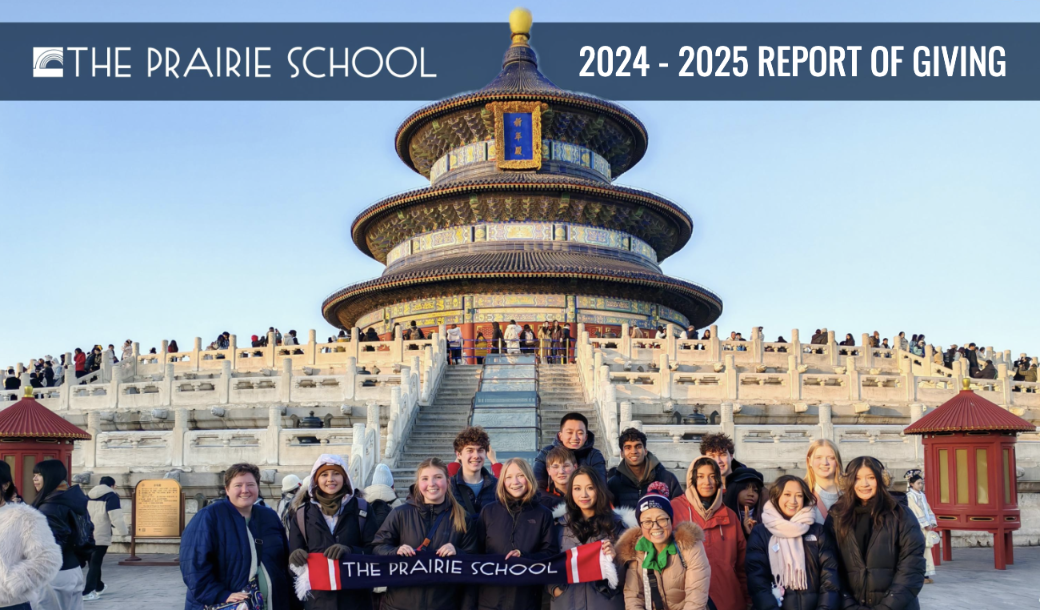
Celebrating the differences and commonalities of the Prairie community by embracing the diversity of our cultures.
2026 Multicultural Festival
February 17, 2026 from 10:00AM - 1:30PM
📍 Johnson Athletic Center Track
The Multicultural Festival celebrates EVERYBODY’S heritage: our language, ancestry, religion, food, art, dress, music, traditions, values, and how we live our lives.
For some of us, this will be similar to our country. Others might share a family tradition. Or, while we may be citizens of the same country, our culture within that country may vary significantly. Cultural table examples might include Appalachia, Irish, Tex Mex, Japanese, Danish, Kenya, Creole, Peruvian, Armenian or African American.
Get Festive, Host a Table
The Multicultural Club will:
- Assign specific locations on the JAC Track Festival Map.
- Reserve a host table with two chairs.
- Assist in setup and breakdown.
- Supply food serving gloves, small plates, spoons, and napkins.
- Provide electricity. Preregistration REQUIRED.
What You Bring:
- Yourself. Be in person at your table.
- Your stories. The heart of the Festival.
- Your culture. Proudly celebrate your history, customs, and traditions while avoiding anything politically-charged.
- Festive tablecloth. Think eye-catching.
- Cultural dress. Optional, but encouraged.
- Small food snacks. Optional, but no cooking or frying.
Questions? Contact:
- Pat Badger, Multicultural Club Advisor
Deadline:
- December 12, 2025
El club multicultural va a:
- Asignar lugares específicos en el mapa del JAC Track Festival.
- Reservar una mesa de anfitrión con dos sillas.
- Asistir en montar y tirar abajo.
- Proveer guantes para servir comida, platos pequeños, cucharas, y servilletas.
- Proveer electricidad. Preregistracion REQUERIDA.
Lo que traes tu:
- A ti mismo. Esté en persona en su mesa.
- Tus historias. El corazón del festival.
- Tu cultura. Celebra tu historia, cultura, y tradiciones, mientras te alejas de las cosas políticas.
- Mantel festivo. Piensa llamativo.
- Ropa cultural. Opcional, pero alentado.
- Pequeños bocadillos de comida. Optional, pero no cocinar o freír en vivo.
Preguntas – Contactar:
- Pat Badger, Multicultural Club Advisor
Link Para Inscribirse:
- FECHA LIMITE DE INSCRIPCION: 12 de Diciembre, 2025
多元文化俱乐部会
- 在JAC体育馆跑道分配文化展示桌的位置
- 预留桌位并分配两把椅子
- 协助布置和清理现场
- 提供塑胶手套、小盘子、勺子和餐巾纸
- 提供电源 * 需要预先登记
你需要带:
- 你自己;自己介绍你的文化展示桌
- 你的故事;文化的核心要素
- 你的文化;庆祝你的历史、风俗和传统;请避免讨论有关政治的话题
- 节日桌布 – 要醒目、吸引眼球
- 传统服饰 – 可选,但鼓励穿着
- 小吃点心 – 可选,但不得现场烹饪或油炸
如果你有问题,请联系
- Pat Badger, 顾问
报名链接
- 报名截止日期:2025年12月12日
L’association multiculturel va:
- Donner une position sur la carte de la piste JAC
- Réserver une table avec deux chaises
- Aider à monter et démonter
- Donner les gants pour servir la nourriture, les petites assiettes, les cuillères, les serviettes
- Offrir l’électricité. Une déclaration en avance est NÉCESSAIRE
Vous Apporterez:
- Vous. Soyez à votre table en personne
- Votre histoire. Le cœur du Festival.
- Votre culture. Célébrez votre histoire, vos coutumes, et vos traditions tout en évitant des choses politiques.
- Une nappe festive. C’est optionnel mais nous vous l’encourageons.
- Des petites collations. C’est optionnel mais vous ne pouvez pas cuisiner ou frire.
Questions – Contacter:
- Pat Badger, Conseillère
Lien pour s’inscrire:
- LA DATE LIMITE POUR S’INSCRIRE: 12 Décembre, 2025
Diwali Celebration 2025
Native American Heritage Month
NOVEMBER 1 – November 30, 2025
Celebrating Traditions, Heritage, Culture, and Contributions
Native American Heritage Month is celebrated during the month of November each year. Congress chose this month as a time to honor Native Americans, since November concludes the Native harvest season, which is also a time of celebration and giving of thanks.
The evolution of this celebration began in 1916 when Red Fox James of the Blackfeet Nation rode on horseback from state to state seeking a day to honor Native Americans. In 1975, President Ford moved the celebration to a week-long event. Finally, in 1990, Congress passed a resolution declaring November as Native American Heritage Month. November 29 is designated as “Native American Heritage Day.”
America is a land of many cultures, some dating back thousands of years; these people lived closely with the land. As of 2021, there are 574 federally recognized Native American Nations. It is important to understand that each tribe is culturally distinct, with its own language, traditions, heritage, and contributions.
According to the Wisconsin Department of Public Instruction, the following Tribal Communities make their home in Wisconsin:
- Bad River Band of Lake Superior Chippewa
- Brothertown Indian Nation
- Forest County Potawatomi
- Ho-Chunk Nation
- Lac Courte Oreilles
Band of Lake Superior Chippewa - Lac du Flambeau Band of Lake Superior Chippewa
- Menominee Indian Tribe of Wisconsin
- Oneida Nation
- Red Cliff Band of Lake Superior Chippewa
- Mole Lake (Sokaogon Chippewa Community) Band of Lake Superior Chippewa
- Saint Croix Chippewa Indians of Wisconsin
- Stockbridge-Munsee Community Band of Mohican Indians
Diwali - Festival of Lights
Di·va·li /dē’välē/
Noun
“Night shines like day when Diwali dusk falls.” Although there are many versions of this five-day celebration, the common thread is lighted lamps symbolizing the victory of light over darkness, good over evil, and knowledge over ignorance. It’s a reminder that, even in the darkest of times, we can help one another.
Held during the end of October or early November in the darkest time of the lunar cycle, Diwali is celebrated by Hindus, Jains, Sikhs, and some Buddhists. It marks the beginning of the New Year and is the biggest and brightest festival, celebrated with feasts, family, friends, and fireworks. Homes are decorated, legends are spoken, and prayers are shared. On the first day, rows of candles or oil lamps called diyas are set up and rangoli designs are created. Day two is for shopping and cooking. On day three, the darkest day of the lunar calendar, the diyas are lit and fireworks set off. On day four families share meals, and on the final day, the bonds between brothers and sisters are celebrated.
Hispanic & Latino Heritage Month
September 15 – October 15, 2025
Celebrating Heritage, Contribution, and Culture
Hispanic Heritage Month, celebrated from September 15 to October 15, 2025, highlights the history, contributions, and culture of people with ancestors from across the Caribbean, Central and South America, Mexico, and Spain. Reaching from Mexico to Tierra del Fuego and spanning much of the Caribbean, countries in this region each have their own rich history, including indigenous cultures and civilizations.
The recognition of Hispanic Heritage month began in 1968 under President Lyndon Johnson and was expanded in 1988 to a month by President Reagan. The date of September 15 is significant because it is the anniversary of independence for Costa Rica, El Salvador, Guatemala, Honduras, and Nicaragua, and for Mexico on September 16, and Chile on September 18.
This month of honoring also includes the African and East Asia diasporas in Latin America as well as indigenous cultures.
The languages of this region include hundreds of indigenous languages in addition to Spanish, Portuguese, French, Dutch, Creole, and English. This year’s theme for Hispanic Heritage Month centers on “Collective Heritage: Honoring the Past, Inspiring the Future.”
Lunar New Year
Lunar New Year is celebrated in the Asian diaspora and in many Asian countries, including China, Korea, Vietnam, Taiwan, Japan, and Mongolia. Since the lunar calendar is based on the cycles of the moon, the dates of the holiday vary from year to year. Beginning on the 24th day of the 12th lunar month, people do a thorough winter cleaning of their homes, bidding farewell to the old year by “sweeping away the dust.” These Spring Festival festivities take place over fifteen days from the evening preceding the first day of the year through the concluding Lantern Festival. Fireworks and anything red are used to ward off the mythological monster, Nian, who is afraid of loud sounds and reddish color; red also symbolizes luck. The celebration is a time to honor ancestors and gather for feasting. It is also a traditional time to give money in red paper envelopes, called hongbao, for good health and happiness. Processionals and parades fill the streets with giant dragons.
In 2025 Lunar New Year falls on January 29 with festivities lasting until February 12. This is the year of the Wood Snake, whose symbolism represents wisdom and creativity. This is a year with hopes for life-changing transformation and rebirth. How do you wish someone a happy Lunar New Year? In Mandarin, wishing someone happiness and prosperity, you say, “Gong xi fa cai.”
Winter Solstice & Seasonal Celebrations
Rituals that Connect Us
From the very beginning of time, there is the sun. We see it in spring, summer, autumn and winter. In our community, we notice some days are long with light and warmth, and others are short with dark and cold. In the darkness we invent rituals to remind us of the light, to represent a new beginning, to herald the rebirth of life.
These rituals become traditions that we celebrate, whether or not we remember where they came from. Many rituals are celebrated with food to represent good fortune in the months to come. In Asia, long noodles represent longevity. In Spain, twelve grapes are eaten at midnight as the clock chimes to symbolize the months ahead. Round foods of all kinds evoke the year’s turning. In Greece, a pomegranate is broken open; the more seeds, the more good luck awaits. Fish are prized for three luck-related reasons: their scales resemble coins, they always swim forward, and their schools symbolize abundance. All these rituals represent new beginnings.
Anticipation of what’s to come.
The Shortest Day by Susan Cooper
And so the Shortest Day came and the year died
And everywhere down the centuries of the snow-white world
Came people singing, dancing, To drive the dark away.
They lighted candles in the winter trees;
They hung their homes with evergreen;
They burned beseeching fires all night long To keep the year alive.
And when the new year’s sunshine blazed awake They shouted, reveling.
Through all the frosty ages you can hear them
Echoing behind us — listen!
All the long echoes, sing the same delight, This Shortest Day,
As promise wakens in the sleeping land:
They carol, feast, give thanks,
And dearly love their friends,
And hope for peace.
And now so do we, here, now,
This year and every year.
Welcome Yule
Here are a few of the traditions that are celebrated during this time of year.
- Saint Nicholas Day – December 6th
- Bodhi Day – December 8th
- St. Lucia Day – December 13th
- Las Posadas – December 16th – 24th
- Yalda – December 20th
- Winter Solstice – December 21st
- Pancha Ganapati – December 21st – 25th
- Chanukah – December 25th – January 2nd
- Christmas – December 25th
- Kwanzaa – December 26th – January 1st
- Oshogatsu – January 1st
- New Year’s Day – January 1st
- Eastern Russian Orthodox Christmas – January 7th
Rosh Hashanah | Yom Kippur
September 22 sunset – September 24 nightfall & October 1 sunset – October 2 nightfall, 2025.
rōSH (h)əˈSHōnə yawm -kip-er
לְשָׁנָה טוֹבָה L’shanah tovah
To a good year
The Jewish High Holidays of Rosh Hashanah and Yom Kippur, among the most religiously significant dates in the Jewish calendar, are a blend of joy and solemnity. Celebrated according to the Soli-lunar calendar, in which the months begin on the new moon and last either 29 or 30 days, this period of the “Days of Awe” falls on different dates each year. The days in between these holidays are a time of introspection.
Rosh Hashanah (literally “head of the year” or New Year) begins this time with prayer and reflection, with the shofar (ram’s horn) blasts, and with celebration that looks forward to the new year. Challah bread is baked in a round loaf, symbolizing the seasons and cycle of life. A week later Yom Kippur (the Day of Atonement) focuses on fasting, prayer, and seeking forgiveness.; it is considered the holiest day of the year.
With their blend of feasting and fasting, atonement and forgiveness, and celebration and renewal, these Jewish holidays, observed both at home and in the synagogue, welcome a new year’s season that is both liberating and spiritually uplifting.
Ramadan Mubarak "Blessed Ramadan"
Evening of February 28 thru Sunset of March 30, 2025
Raa-muh-daan
In the ninth month of the Islamic calendar, Muslims worldwide celebrate Ramadan. The Islamic Lunar Calendar determines the dates, and since the lunar calendar is 10 -12 days shorter than the Gregorian Calendar, this means that the timing of Ramadan shifts each year. Muslims believe that it was during these days when the first verses of the Quran were revealed to the prophet, Muhammad.
Ramadan is a month-long time of fasting between dawn and sunset and being in community with loved ones. Families and friends gather to pray, and meals are eaten with intention; these include suhoor or meals before sunrise and evening iftars to break the daylong fast. At the appearance of the new moon, Ramadan ends with joyful feasting called Eid al-Fitr or “festival of breaking the fast,” which includes traditional foods, sharing of gifts, prayers, and acts of charity. In greeting each other during Ramadan most Muslims use the Arabic translation, “Ramadan Mubarak” or “Blessed Ramadan.”
Kodomo no Hi
May 5th, 2025
Koh – DOH – mo NO HEE
Also known as Freedom Day, Jubilee Day, and Cel-Liberation Day
Juneteenth is always held on the nineteenth day of June. Although Lincoln’s Emancipation Proclamation of January 1, 1863 officially declared “all persons held as slaves” were henceforth free, it took until summer, June 19, 1865 for the last enslaved people, living in Texas, to be informed of their freedom. The reactions ranged from shock to jubilation, and the African American celebration, coined Juneteenth, was born.
Now a federal holiday, Juneteenth grows out of this rich history and, at its heart, embraces an array of local community-based rituals. It is celebrated at culinary soul summits, on rooftops, with food trucks, at plated dinners, in neighborhood centers or local parks. Like the Great Migration, Juneteenth has traveled via trains and autos from its Texas birthplace to every state in our nation.
Today this African American holiday celebrates Emancipation, racial progress, and ancestors, highlighted by family gatherings and good eats. It is a time for spirited joy, reassurance, reflection, and prayer. Milwaukee hosts one of the largest Juneteenth celebrations in our country.
Juneteenth
June 19th
Also known as Freedom Day, Jubilee Day, and Cel-Liberation Day
Juneteenth is always held on the nineteenth day of June. Although Lincoln’s Emancipation Proclamation of January 1, 1863 officially declared “all persons held as slaves” were henceforth free, it took until summer, June 19, 1865 for the last enslaved people, living in Texas, to be informed of their freedom. The reactions ranged from shock to jubilation, and the African American celebration, coined Juneteenth, was born.
Now a federal holiday, Juneteenth grows out of this rich history and, at its heart, embraces an array of local community-based rituals. It is celebrated at culinary soul summits, on rooftops, with food trucks, at plated dinners, in neighborhood centers or local parks. Like the Great Migration, Juneteenth has traveled via trains and autos from its Texas birthplace to every state in our nation.
Today this African American holiday celebrates Emancipation, racial progress, and ancestors, highlighted by family gatherings and good eats. It is a time for spirited joy, reassurance, reflection, and prayer. Milwaukee hosts one of the largest Juneteenth celebrations in our country.
















